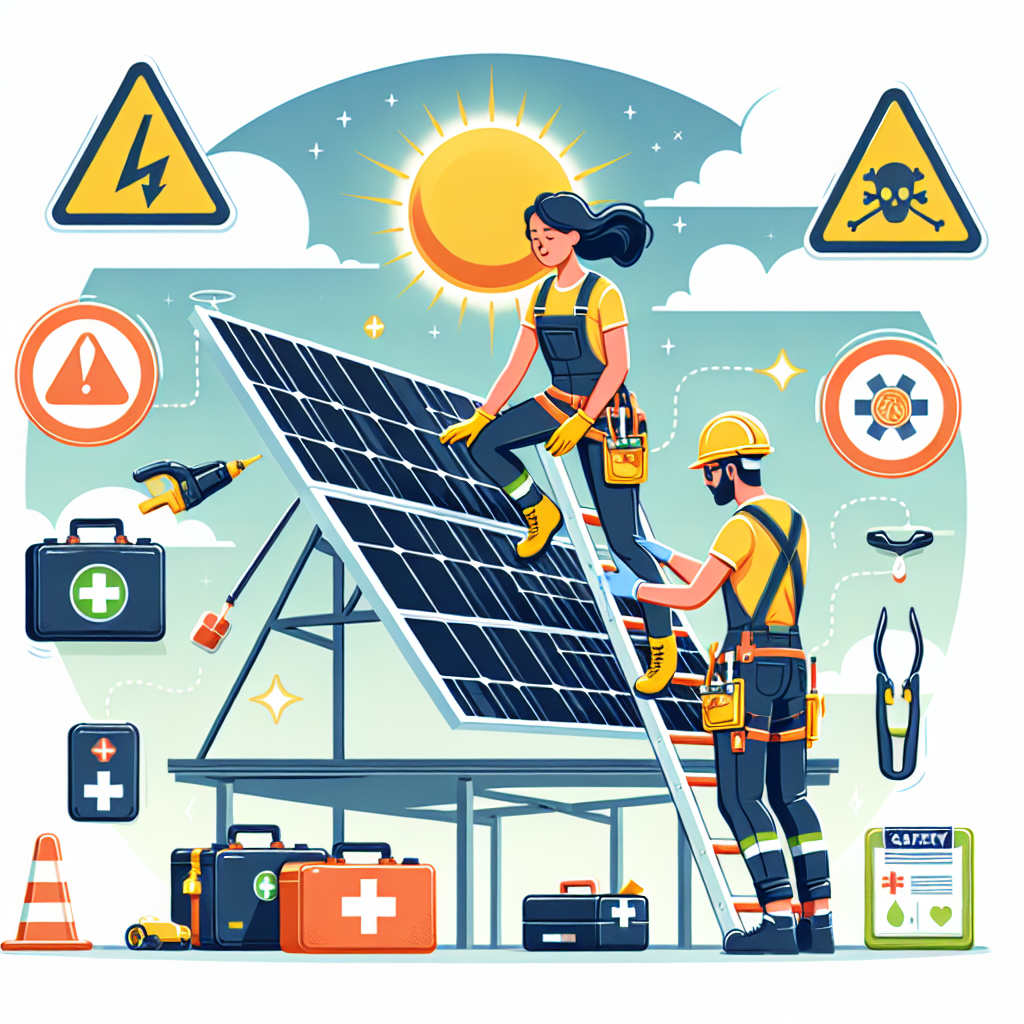In an age where renewable energy is at the forefront of innovation, solar panels have emerged as a leading choice for eco-conscious homeowners and businesses alike. However, while the benefits of solar energy are clear, the installation process can pose several risks. To ensure a safe and efficient setup, it’s crucial to prioritize safety. Here’s a comprehensive guide on essential precautions for solar panel installation.
Understanding the Risks of Solar Panel Installation
Before diving into installation, it’s important to recognize the potential hazards involved. Common risks associated with solar panel installation include:
- Electrical Shock: Working with electricity always has inherent risks, especially when dealing with photovoltaic systems.
- Falls: Installing solar panels often requires working at heights, which can lead to falls if proper safety measures aren’t in place.
- Weather Conditions: Extreme weather can complicate installation procedures and increase risks.
By acknowledging these risks in advance, you can prepare yourself and your team to mitigate them effectively.
The Importance of Planning Ahead
1. Conduct a Risk Assessment
Before any physical work begins, conduct a thorough risk assessment. Identify the specific safety hazards related to your installation site. This includes assessing the roof type, the electrical system, and environmental factors.
2. Gather the Right Tools and Equipment
Having the appropriate safety gear is essential. Ensure you have the following:
- Hard hats
- Safety goggles
- Harnesses for fall protection
- Non-slip footwear
- Electrical gloves
Using the right tools not only enhances safety but also increases efficiency during installation.
Training and Certification: The Foundation of Safety
1. Hire Qualified Professionals
If you’re not experienced in solar panel installation, it’s wise to hire qualified professionals. Look for licensed contractors with certifications in solar panel installation. They will have the expertise needed to navigate safety protocols effectively.
2. Educate Yourself and Your Team
If you’re leading the installation, ensure everyone on your team is educated on safety practices. Conduct training sessions to cover emergency procedures, proper use of equipment, and safe lifting techniques.
Implementing Safety Measures During Installation
1. Work at Ground Level When Possible
Whenever feasible, complete as much of the work as possible at ground level. This reduces the need to work at heights, reducing the risk of falls.
2. Use Ladders and Scaffolding Safely
When ladders or scaffolding are necessary:
- Ensure ladders are on stable ground.
- Use scaffolding that is correctly erected and inspected.
- Always maintain three points of contact when climbing a ladder.
3. Know Your Electrical Systems
Before connecting solar panels to the electrical grid:
- Ensure all circuit breakers and disconnect switches are turned off.
- Use lockout/tagout procedures to prevent accidental energization.
It’s crucial to familiarize yourself with the electrical setup to avoid potential hazards.
Weather Considerations: Timing is Everything
Solar panel installation can be affected significantly by weather conditions. Here are some tips:
- Avoid Installation During Severe Weather: High winds, rain, or snow can create dangerous working conditions. Always check the weather forecast before scheduling installation.
- Monitor Temperature: Extreme heat can lead to heat stress, while extreme cold can increase the risk of slips and falls.
Being mindful of the weather can not only keep you safe but also ensure a smoother installation process.
Post-Installation Safety Checks
1. Conduct Thorough Inspections
After installation, conduct a comprehensive inspection. Check all electrical connections and make sure panels are secured properly. An overlooked issue can lead to long-term safety risks.
2. Educate Homeowners on System Use
If you’ve installed solar panels for a client, be sure to educate them on safe usage and maintenance. Encourage them to contact a professional for repairs or inspections rather than attempting DIY fixes.
Conclusion: Safety is a Priority
The transition to solar energy offers many advantages, from reducing energy bills to lowering your carbon footprint. However, safety must always come first during installation. By prioritizing safety protocols, training teams, and planning effectively, you can ensure a smooth installation process.
For those considering solar panel installation, remember: investing in safety today will yield its benefits tomorrow. Embrace renewable energy safely and responsibly, because when it comes to solar installation, safety truly comes first.
By implementing these essential precautions, you can help foster a culture of safety in the solar panel installation industry, paving the way for a brighter, greener future for all.


